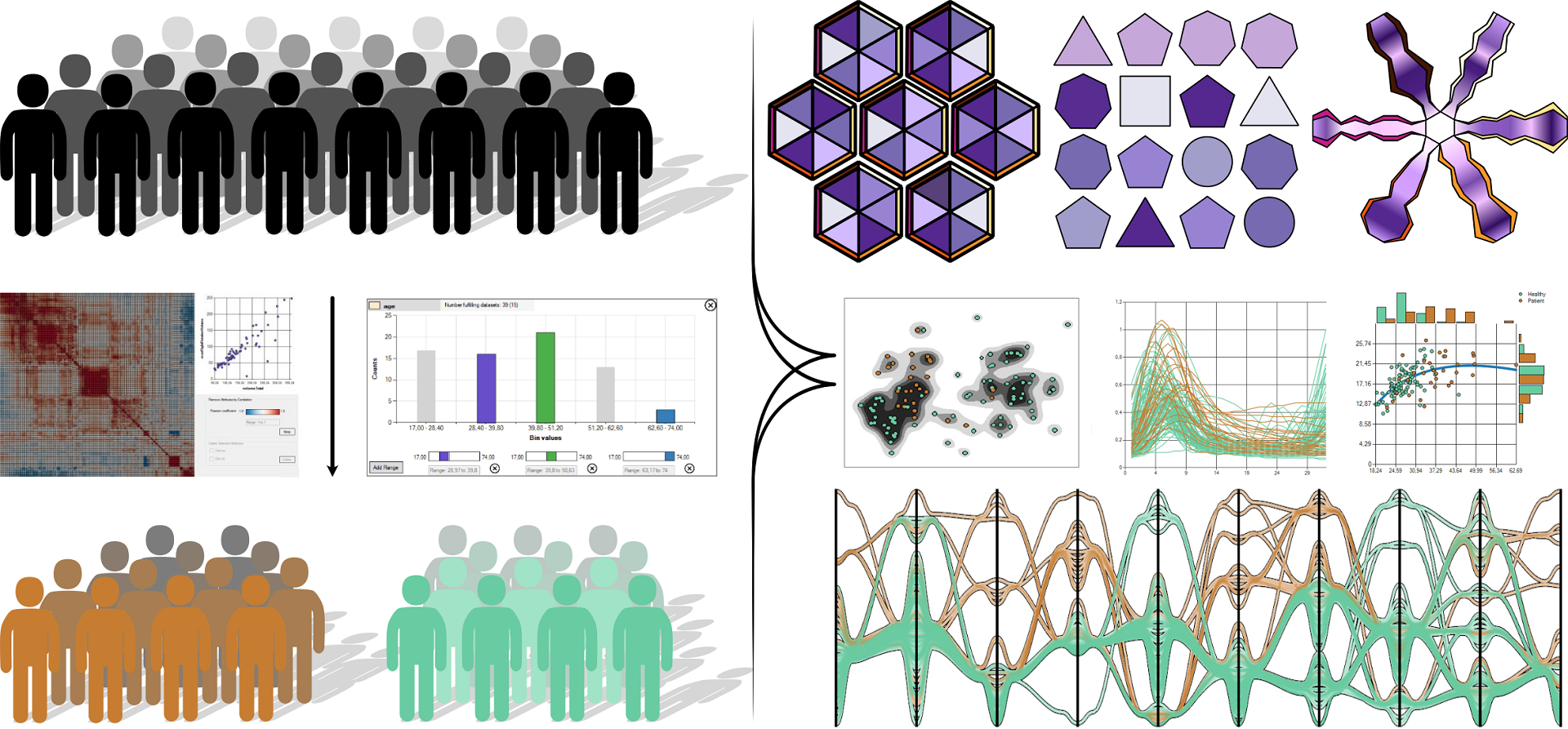GUCCI - Guided Cardiac Cohort Investigation of Blood Flow Data
Monique Meuschke, Uli Niemann, Benjamin Behrendt, Matthias Gutberlet, Bernhard Preim, Kai Lawonn
View presentation:2022-10-20T15:00:00ZGMT-0600Change your timezone on the schedule page
2022-10-20T15:00:00Z

Prerecorded Talk
The live footage of the talk, including the Q&A, can be viewed on the session page, Neuro/Brain/Medical Data.
Fast forward
Keywords
Medical Visualization, Cohort Analysis, Measured Blood Flow Data, Cardiac Diseases
Abstract
We present the framework GUCCI (Guided Cardiac Cohort Investigation), which provides a guided visual analytics workflow to analyze cohort-based measured blood flow data in the aorta. In the past, many specialized techniques have been developed for the visual exploration of such data sets for a better understanding of the influence of morphological and hemodynamic conditions on cardiovascular diseases. However, there is a lack of dedicated techniques that allow visual comparison of multiple datasets and defined cohorts, which is essential to characterize pathologies. GUCCI offers visual analytics techniques and novel visualization methods to guide the user through the comparison of predefined cohorts, such as healthy volunteers and patients with a pathologically altered aorta. The combination of overview and glyph-based depictions together with statistical cohort-specific information allows investigating differences and similarities of the time-dependent data. Our framework was evaluated in a qualitative user study with three radiologists specialized in cardiac imaging and two experts in medical blood flow visualization. They were able to discover cohort-specific characteristics, which supports the derivation of standard values as well as the assessment of pathology-related severity and the need for treatment.